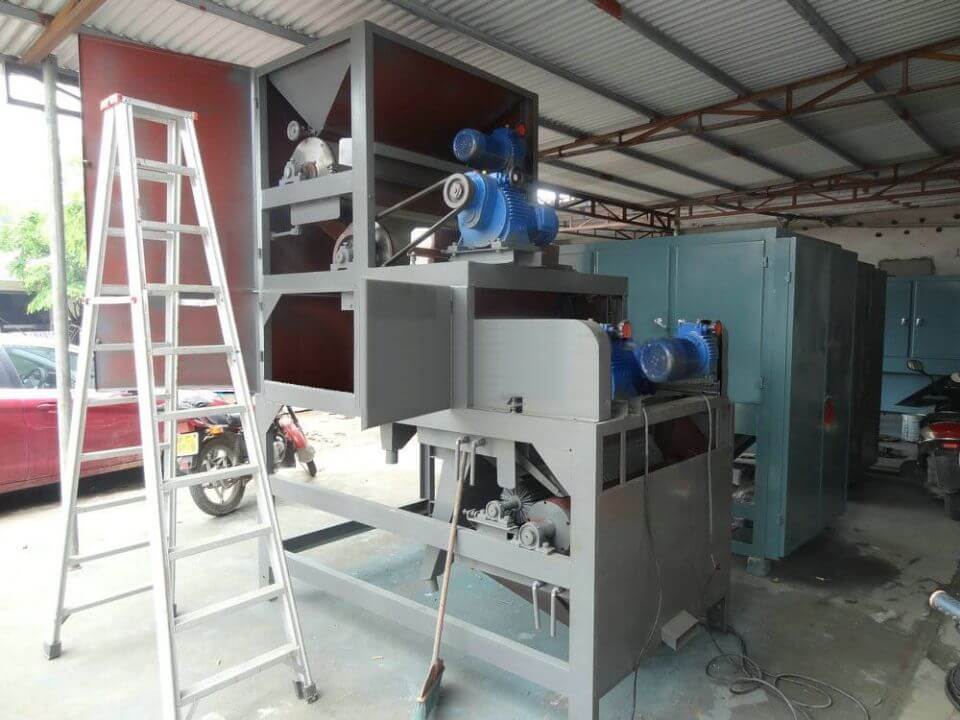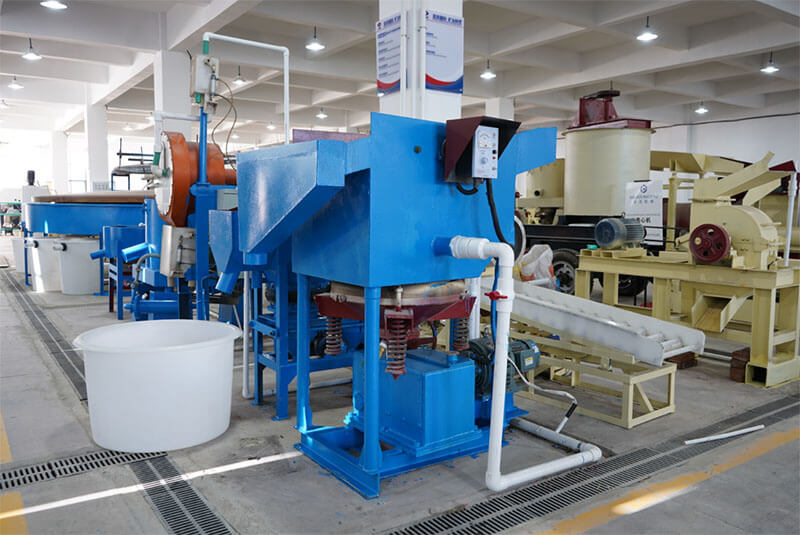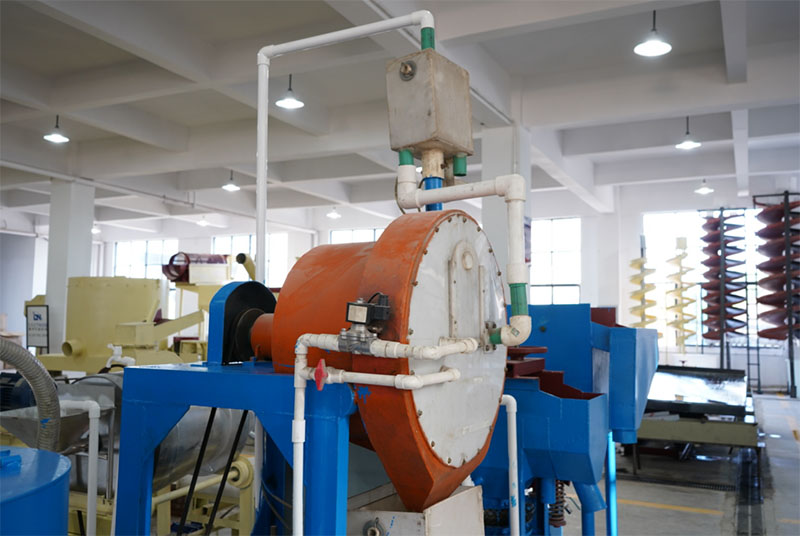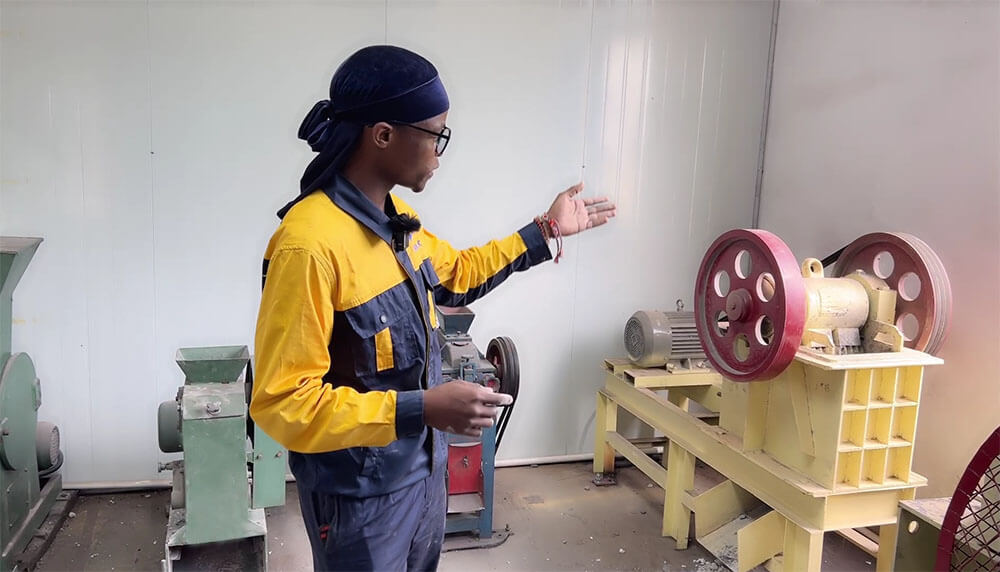The laboratory grinding equipment cylinder ball mill is a fully sealed intermittent grinding equipment for dry and wet mineral processing. It is widely used for semi-industrial laboratories in building materials (especially cement and ceramic industries), refractory materials, metallurgy, coal, light, and chemical industries. It has wide application in agriculture and other small industrial materials grinding for ore selection research. This machine is a transitional grinding equipment between continuous and intermittent grinding. It is also a grinding equipment suitable for artificial heavy sand separation of minerals in geological experimental work.
Advantages
- Both feeding and discharging ports are large, lightweight, and flexible.
- Large processing capacity, good dry and wet grinding effects.
- Arbitrary setting of grinding time.
- The machine structure is compact, and the transmission mechanism design is reasonable, simple, and reliable.
Working principle
This machine includes the feeding, discharging, rotating, and transmission department (reducer, small transmission gear, motor, and electric control). The hollow shaft is made of cast steel parts, and the inner lining can be disassembled and replaced. The rotary gear adopts casting hobbing, and the cylinder body adopts wear-resistant lining plates with good wear resistance. This machine runs smoothly and works reliably.
Lab cyclinder ball mill operation working principle
- During the operation of the lab cylinder ball mill, the grinding medium and materials inside the cylinder elevate to a certain height along with the rotation of the cylinder. Due to the effect of gravity, they detach from the cylinder wall and fall along a parabolic line. The grinding medium and materials roll at high speed in the grinding tank, producing strong shear and impact. Rolling on the materials will achieve materials crushing, grinding, and dispersing.
- Due to the continuous feeding of materials, the material inside the cylinder moves from the feeding end to the discharging end under the pressure. The material that reaches the finished particle size will discharge from the discharge end of the cylinder. During wet grinding, the material comes out with water flow. During dry grinding, the material comes out with the airflow. The straight tube energy-saving ball mill has a discharge grid at the discharge end, and the mill relies on grid plates to forcibly discharge ore. The slurry surface inside the cylinder is low, reducing ore over-grinding and preventing steel balls from being discharged. The higher the speed of the ball mill, the higher the energy generated by grinding the ball during ball milling. The sample ore will be fine.
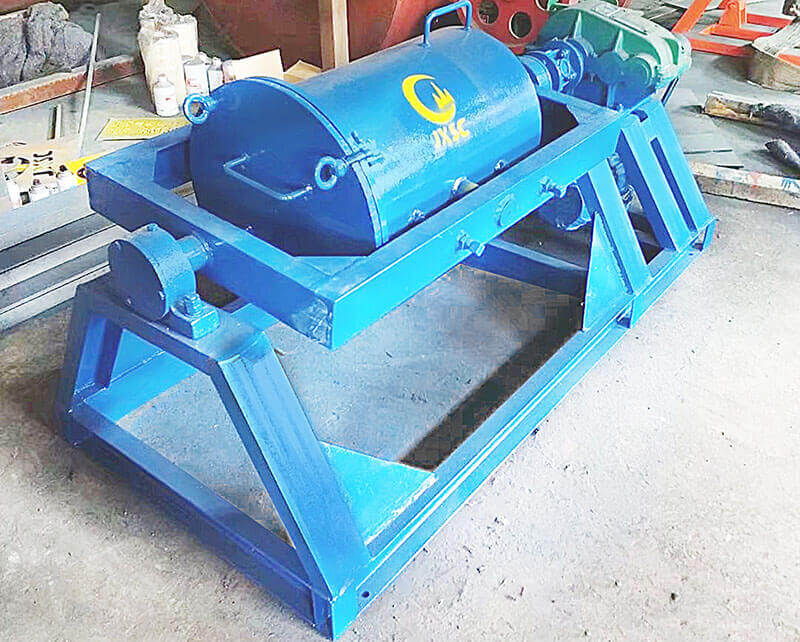
How To Clean Lab Cylinder Ball Mill?
When we use a laboratory ball mill to grind samples, due to the high-energy collision and compression of the grinding balls, some residual samples are difficult to remove on the walls of the grinding tank and balls. It is hard to clean them thoroughly using general cleaning methods. So, how can we clean the ball mill neatly? Below, we will share the cleaning methods for ball milling tanks and grinding balls.
Add water for cleaning
Water is a commonly used liquid for our daily cleaning. Before cleaning, we soak the ball mill and grinding balls, and add detergents, dishwashing detergent, etc. Then we use a brush to clean them.
Add corresponding solvents for cleaning
It is difficult to remove the sample residues by using only water. In this case, we can use the chemical properties of the residual material to add cleaning solvents that can dissolve it, such as acetone, butanone, ethanol (alcohol), oxalic acid, hydrochloric acid, etc., and then soak and clean. When using solvents for cleaning, we need to avoid chemical reactions between the added solvents and the materials of the ball mill and grinding balls.
In addition, for wet grinding samples, we can use the same solvent as during grinding for cleaning, and the effect is also good.
Cleaning of ball mill under no-load operation
When the ball mill is in operation, the grinding balls in the mill tank will move at high speed, causing impact and friction. Based on this principle, we can combine the above two methods to put the grinding ball to be cleaned and the cleaning solvent into the ball mill tank at the same time. Then, turn on the machine and let the ball mill run empty for about half an hour to one hour. It will efficiently remove the residual samples inside the ball mill tank and grinding ball, and we can then rinse them with water.
When the ball mill runs empty for cleaning, the speed should not be too high to reduce the loss of grinding balls and energy consumption of the ball mill. When using this method for cleaning, in addition to water and detergent. We can also add cleaning agents such as aluminum oxide powder, fine sand, quartz sand (for residual alloying samples), or small-sized corundum balls to increase contact friction, which produces a good cleaning effect.
Using plasma or ultrasonic cleaning machines
This method belongs to mechanical vibration cleaning, which can destroy the adsorption between residual samples and the surface of the parts, thereby achieving the cleaning effect. For oils or samples with strong viscosity, this method is more suitable.
Sometimes when cleaning tanks and grinding balls, using only one method is not enough to clean them thoroughly. It requires a combination of two or several methods to complete the cleaning. It is recommended to clean the ball milling tank and balls after each sample grinding process. Otherwise, residual samples may accumulate and become difficult to clean.
JXSC lab mineral processing equipment manufacturer has more than 38 years of experience in mining processing. We provide various lab mining equipment including gravity-separating equipment for processing minerals such as gold, tin, tungsten, lead, zinc, tantalum, niobium, iron, manganese, silver, titanium-iron, etc. Lab machines include laboratory jaw crusher, hammer crusher, roller crusher, grinding equipment, lab gravity separator, screening, washing equipment, etc. Welcome to consult!

